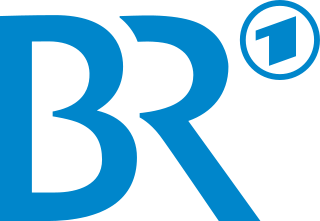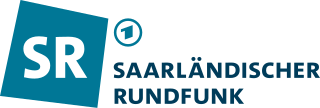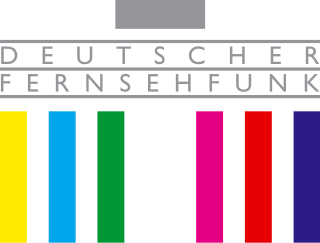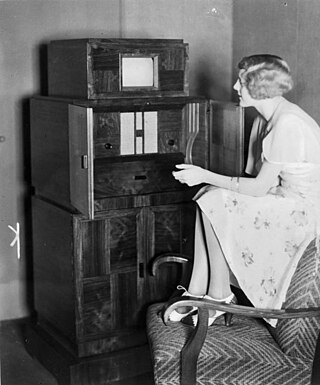
The Olympic Tower in the Olympic Park, Munich has an overall height of 291 m (955 ft) and a weight of 52,500 tons. At a height of 190 m (620 ft) there is an observation platform as well as an exhibition commemorating the 50th anniversary of the Tower. Previously in that space was a small rock-and-roll museum housing various memorabilia. Since its opening in 1968, the tower has registered over 43 million visitors. At a height of 182 m (597 ft) there is a revolving restaurant, which seats 230 people. A full revolving takes 53 minutes. The tower also serves as a broadcast tower, and has one Deutsche Telekom maintenance elevator with a speed of 4 m/s (13 ft/s), as well as two visitor lifts with a speed of 7 m/s (23 ft/s) which have a capacity of about 30 people per car. The travel time is about 30 seconds. The tower is open daily from 09:00 to 24:00.

ARD is a joint organisation of Germany's regional public-service broadcasters. It was founded in 1950 in West Germany to represent the common interests of the new, decentralised, post-war broadcasting services – in particular the introduction of a joint television network.
Tagesschau is a German national and international television news service produced by the editorial staff of ARD-aktuell on behalf of the German public-service television network ARD.
Das Erste is the flagship national television channel of the ARD association of public broadcasting corporations in Germany. Das Erste is jointly operated by the nine regional public broadcasting corporations that are members of the ARD.
Westdeutscher Rundfunk Köln, shortened to WDR, is a German public-broadcasting institution based in the Federal State of North Rhine-Westphalia with its main office in Cologne. WDR is a constituent member of the consortium of German public-broadcasting institutions, ARD. As well as contributing to the output of the national television channel Das Erste, WDR produces the regional television service WDR Fernsehen and six regional radio networks.

The Fernsehturm Dresden-Wachwitz is a TV tower in Dresden, Germany. It is situated on the Wachwitzer Elbhöhen and serves as a transmitting tower for television and radio broadcasts. Due to its visibility over large distances and its unusual form, it has become a landmark of Dresden and the Elbe Valley. Its address is 37 Oberwachwitzer Way, Dresden.
Südwestrundfunk, shortened to SWR, is a regional public broadcasting corporation serving the southwest of Germany, specifically the federal states of Baden-Württemberg and Rhineland-Palatinate. The corporation has main offices in three cities: Stuttgart, Baden-Baden and Mainz, with the director's office being in Stuttgart. It is a part of the ARD consortium.
Mitteldeutscher Rundfunk, shortened to MDR, is the public broadcaster for the federal states of Thuringia, Saxony and Saxony-Anhalt in Germany. Established in January 1991, its headquarters are in Leipzig, with regional studios in Dresden, Erfurt and Magdeburg. MDR is a member of the ARD consortium of public broadcasters in Germany.

Bayerischer Rundfunk, shortened to BR, is a public-service radio and television broadcaster, based in Munich, capital city of the Free State of Bavaria in Germany. BR is a member organization of the ARD consortium of public broadcasters in Germany.
Television in Germany began in Berlin on 22 March 1935, broadcasting for 90 minutes three times a week. It was home to the first public television station in the world, named Fernsehsender Paul Nipkow.

Norddeutscher Rundfunk, commonly shortened to NDR, is a public radio and television broadcaster, based in Hamburg. In addition to the city-state of Hamburg, NDR broadcasts for the German states of Lower Saxony, Mecklenburg-Vorpommern and Schleswig-Holstein. NDR is a member of the ARD organisation.

Rundfunk Berlin-Brandenburg, commonly shortened to RBB, is an institution under public law for the German states of Berlin and Brandenburg, based in Berlin and Potsdam. RBB was established on 1 May 2003 through the merger of Sender Freies Berlin (SFB) and Ostdeutscher Rundfunk Brandenburg (ORB), based in Potsdam, and is a member of the Association of PSBs in the Federal Republic of Germany (ARD).

Saarländischer Rundfunk, shortened to SR, is a public radio and television broadcaster serving the German state of Saarland. With headquarters in the Halberg Broadcasting House in Saarbrücken, SR is a member of the ARD consortium of German public-broadcasting organizations.
Aktenzeichen XY... ungelöst is a German interactive television programme first broadcast on 20 October 1967 on ZDF. Created by Eduard Zimmermann, it aims to combat and solve crimes. The programme is currently presented by Rudi Cerne. It airs monthly, with 12 episodes in a year, on Wednesday at 8:15 PM.

Deutscher Fernsehfunk was the state television broadcaster in the German Democratic Republic from 1952 to 1991.

The first regular electronic television service in Germany began in Berlin on March 22, 1935, as Deutscher Fernseh Rundfunk. Broadcasting from the Fernsehsender Paul Nipkow, it used a 180-line system, and was on air for 90 minutes, three times a week. Very few receivers were ever privately owned, and viewers went instead to Fernsehstuben. During the 1936 Summer Olympics, broadcasts, up to eight hours a day, took place in Berlin and Hamburg. The Nazis intended to use television as a medium for their propaganda once the number of television sets was increased, but television was able initially to reach only a small number of viewers, in contrast to radio. Despite many technical improvements to camera technology, allowing for higher resolution imaging, by 1939, and the start of World War II, plans for an expansion of television programming were soon changed in favor of radio. The production of the TV receiver E1, that had just started was cancelled because of the war. Nevertheless, the Berlin station, along with one in occupied Paris, remained on the air for most of World War II. A special magazine called Fernsehen und Tonfilm was published.
ZDF Musikkanal was the name of a television channel operated by ZDF which had started broadcasting on 1 January 1984 as part of the cable pilot projects in West Germany. The station broadcast a moderated programme with a thematic focus on music. The programmes broadcast came almost exclusively from the archives of the ZDF main programme.

Funk is a German video-on-demand service, operated by the public broadcasters ARD and ZDF. SWR, a regional ARD member, is responsible for the service. Funk describes itself as a "content network". The target group is people between the age of 14 and 29.

Bild was a German free-to-air private news TV channel that represented the television arm of the Bild newspaper. It belonged to the WeltN24 broadcasting group, the TV subsidiary of Springer SE, and began broadcasting on 22 August 2021. The program was distributed via German cabel networks, Satellit Astra 19.2 E, IPTV and OTT.The station was financed through advertising and the main program was the news format "BILD LIVE".












